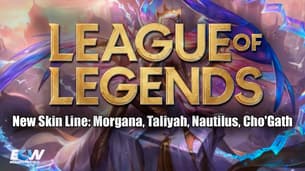
NBA Esports Drafts vs Fantasy Drafts: What’s the Difference?

As basketball evolves, so do the ways fans engage with the sport. Two of the most popular interactive formats today—NBA 2K League drafts and fantasy basketball drafts—are often confused but are fundamentally different.
While both involve selecting players and managing rosters, what’s often missed is this: NBA 2K League drafts select the players themselves, meaning real-life gamers who compete in the league. Fantasy drafts, on the other hand, are built around assembling rosters of actual NBA athletes, whose real-world performance drives your team’s success.
This difference shapes everything from the scouting process to roster structure. Whether you're a fantasy veteran or a new fan of NBA esports, knowing how these drafts operate—and why they matter—can deepen your understanding of both competitive gaming and statistical team-building.
What Is an NBA Esports Draft? Professional Gamers, Not NBA Players
The NBA 2K League is a professional esports league where franchises select top-tier video game players to represent them in live, competitive NBA 2K matches. These gamers are drafted as themselves, gifted keyboard warriors playing on virtual courts—not as representations of real-world NBA stars.
How Gamers Qualify for the NBA 2K League
To qualify for the NBA 2K League draft, players must go through a structured evaluation system. This includes taking into account online combine stats, amateur tournament play, and interviews conducted by league scouts and coaches. Prospective draftees are judged on skill, communication, role flexibility, and how well they understand team strategy.
Building a Cohesive Esports Roster
Each team drafts players to fill in-game roles: point guard, shooting guard, small forward, power forward, and center. These aren’t just labels; each role comes with preset attributes, meaning you can’t build a “superteam” with all scorers. Coaches must balance defenders, passers, and shooters to construct a cohesive unit.
What Is a Fantasy Draft? Selecting NBA Players Based on Real-World Stats
In NBA fantasy sports, players are not controlling the action—they’re managing rosters made up of real-life NBA athletes. These athletes generate points for fantasy teams through their performance in actual games: points scored, rebounds, assists, steals, and other measurable stats.
Using Statistics and Projections in Fantasy Drafts
Fantasy basketball drafts lean heavily on data. Managers consider previous season stats, injury histories, usage rates, and team changes. Tools like average draft position (ADP) and player projections are used to rank talent. Decisions are typically made using a mix of historical data and predictive modeling, not scouting personalities or team chemistry.
Fantasy Rosters Offer More Flexibility and Depth
Instead of building a five-man team, fantasy managers often fill out deeper rosters with bench spots, utility roles, and injured reserve slots. The draft is only the beginning—managers can trade, pick up free agents, and stream matchups throughout the season.
How Roster Rules and Roles Differ Between Formats
The contrast between the two systems becomes even more visible when looking at how rosters are constructed and maintained.
Esports Drafts Require Predefined Roles and Team Balance
In NBA 2K League play, each gamer’s avatar is locked into a specific archetype. A center will not suddenly become a three-point shooter. The team needs to ensure coverage across defense, spacing, and playmaking. Once drafted, there’s no swapping players mid-season or re-rolling roles. Success is defined by how these five players perform together in real time.
Fantasy Drafts Allow Multi-Position Eligibility and Weekly Moves
Fantasy basketball, however, offers significant lineup flexibility. Many players qualify for multiple positions, allowing for creative roster structuring. Rotations can change weekly based on opponent matchups or injuries. Managers can bench underperformers, drop injured stars, and even swap entire teams over the course of a season.
Success often depends on how managers react in the weeks that follow. This includes watching for breakout performances, trade rumors, and injury reports. Timely reactions to NBA updates —such as starting lineup changes or midseason trades—can give savvy managers a critical edge. Flexibility and responsiveness are just as important as initial draft execution in fantasy formats, where the season’s narrative is constantly shifting.
Why Understanding This Difference Matters for Fans
While both formats revolve around drafts, they offer entirely different experiences. In NBA esports, fans follow the journey of real gamers who play professionally on a digital court. These athletes train, scrimmage, and adapt strategies with coaches—just like NBA teams. The draft is the most important moment in building a title-contending squad.
In fantasy sports, success is determined by real NBA results, over which managers have no control. It’s a game of observation and adaptation, not execution. Fantasy players never enter the arena—they shape their fortunes from the outside.
Understanding the difference means appreciating what each format offers: esports showcases human performance under virtual pressure; fantasy basketball rewards statistical intuition and engagement with the NBA season.
How Strategy on Draft Day Changes by Format
Both drafts are strategic, but what defines “smart” strategy varies by format.
Esports Draft Strategy Is About Fit, Communication, and Role Execution
Drafting in the NBA 2K League resembles the job of an NBA general manager. Coaches analyze film, conduct interviews, and try to project how a player will behave in high-pressure moments on the virtual court. There’s no analytics dashboard for mental toughness or leadership. You’re drafting real people, not projections.
Fantasy Draft Strategy Is About Forecasting Production and Value
Fantasy drafts reward foresight and data crunching. Knowing when to grab a breakout player or when to pass on a declining veteran can shape your season. Managers aim for players who can stuff the stat sheet, regardless of how their real team is performing.
Looking Ahead: Where Esports and Fantasy Intersect
Though distinct, the two formats occasionally overlap. Some fans follow NBA 2K League stars as closely as real NBA athletes. Others bring fantasy thinking into esports, tracking player stats, win rates, and preferred archetypes.
As technology and engagement models evolve, these differences may narrow. But for now, one thing remains clear: in NBA 2K drafts, the player is the performer. In fantasy drafts, the player is the product.
Both offer unique insights into the game—and different ways to become part of the action.

Kateryna Prykhodko est une auteure créative et une contributrice fiable à EGamersWorld, connue pour son contenu engageant et son attention aux détails. Elle combine la narration avec une communication claire et réfléchie, jouant un rôle important à la fois dans le travail éditorial de la plateforme et dans les interactions en coulisses.
 Aperçu des Game Awards 2025 : Meilleures annoncesLes annonces de la TGA 2025 ont été l'occasion d'un grand coup de balai chez les indépendants, de grandes révélations et de dates fermes pour plusieurs sorties en 2026-2027.
Aperçu des Game Awards 2025 : Meilleures annoncesLes annonces de la TGA 2025 ont été l'occasion d'un grand coup de balai chez les indépendants, de grandes révélations et de dates fermes pour plusieurs sorties en 2026-2027. Nouveaux détails sur Divinity sur TGA 2025 : Bande-annonce cinématique, date de sortie, et autresDe nouveaux détails sur Divinity apparaissent alors que le plus grand projet de RPG de Larian prend forme après sa révélation aux Game Awards.
Nouveaux détails sur Divinity sur TGA 2025 : Bande-annonce cinématique, date de sortie, et autresDe nouveaux détails sur Divinity apparaissent alors que le plus grand projet de RPG de Larian prend forme après sa révélation aux Game Awards. Les Game Awards 2025 : Diablo 4 Lord of Hatred - Nouveau DLC, annonce d'une nouvelle saison, deux nouveaux personnages et bien plus encoreBlizzard annonce le DLC Diablo 4 : Lord of Hatred aux Game Awards 2025. Détails de la nouvelle saison, classe Paladin, nouvelle région Skovos, révision de la fin du jeu, changements de compétences et sortie en avril 2026.
Les Game Awards 2025 : Diablo 4 Lord of Hatred - Nouveau DLC, annonce d'une nouvelle saison, deux nouveaux personnages et bien plus encoreBlizzard annonce le DLC Diablo 4 : Lord of Hatred aux Game Awards 2025. Détails de la nouvelle saison, classe Paladin, nouvelle région Skovos, révision de la fin du jeu, changements de compétences et sortie en avril 2026. League of Legends Nouvelle ligne de skin : Morgane, Taliyah, Nautilus, Cho'GathUne nouvelle gamme de skins League of Legends arrive avec des skins Petricite et Prestige pour Morgane, Taliyah, Nautilus et Cho'Gath. Détails, prix et informations sur la sortie à l'intérieur.
League of Legends Nouvelle ligne de skin : Morgane, Taliyah, Nautilus, Cho'GathUne nouvelle gamme de skins League of Legends arrive avec des skins Petricite et Prestige pour Morgane, Taliyah, Nautilus et Cho'Gath. Détails, prix et informations sur la sortie à l'intérieur.


